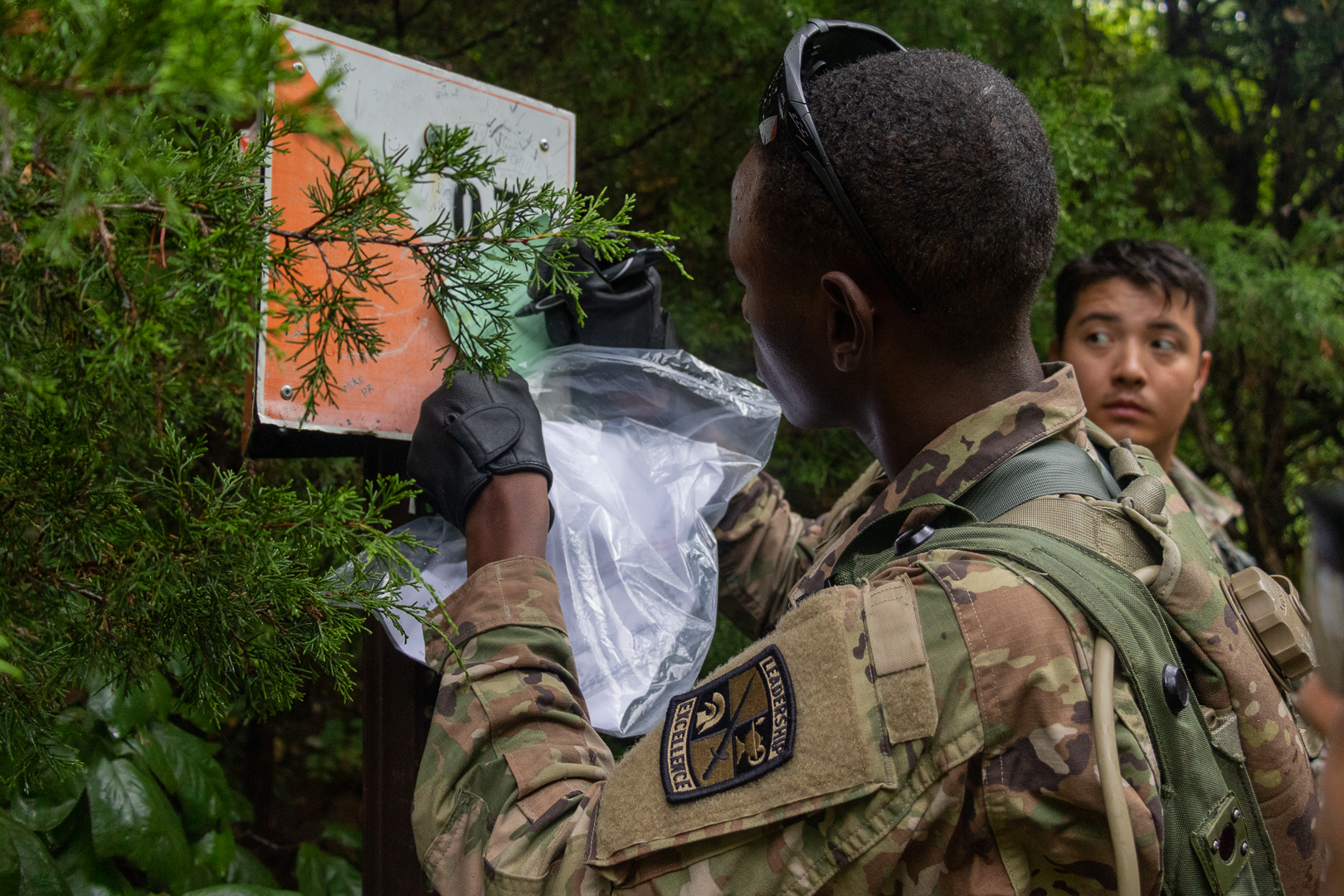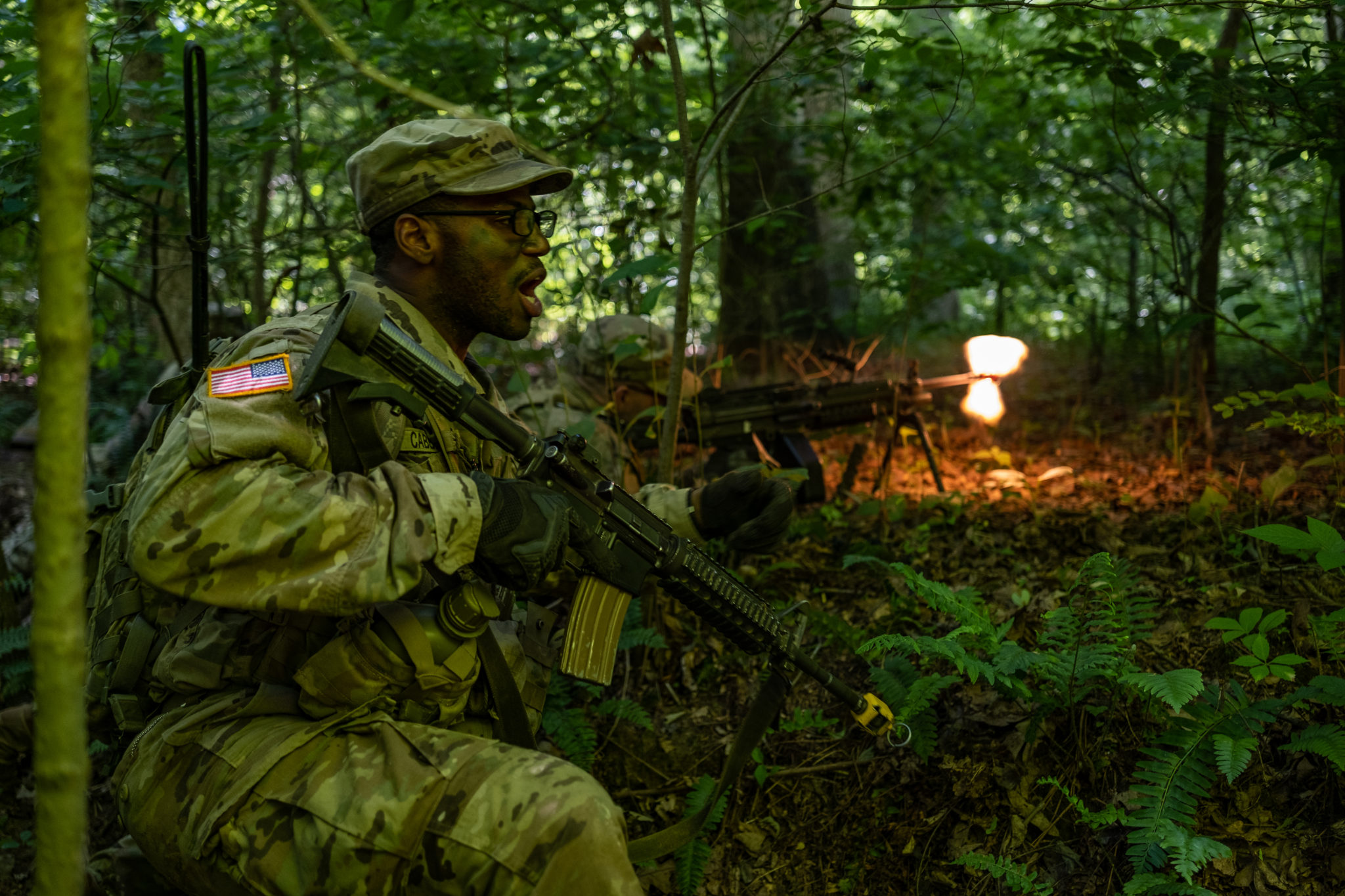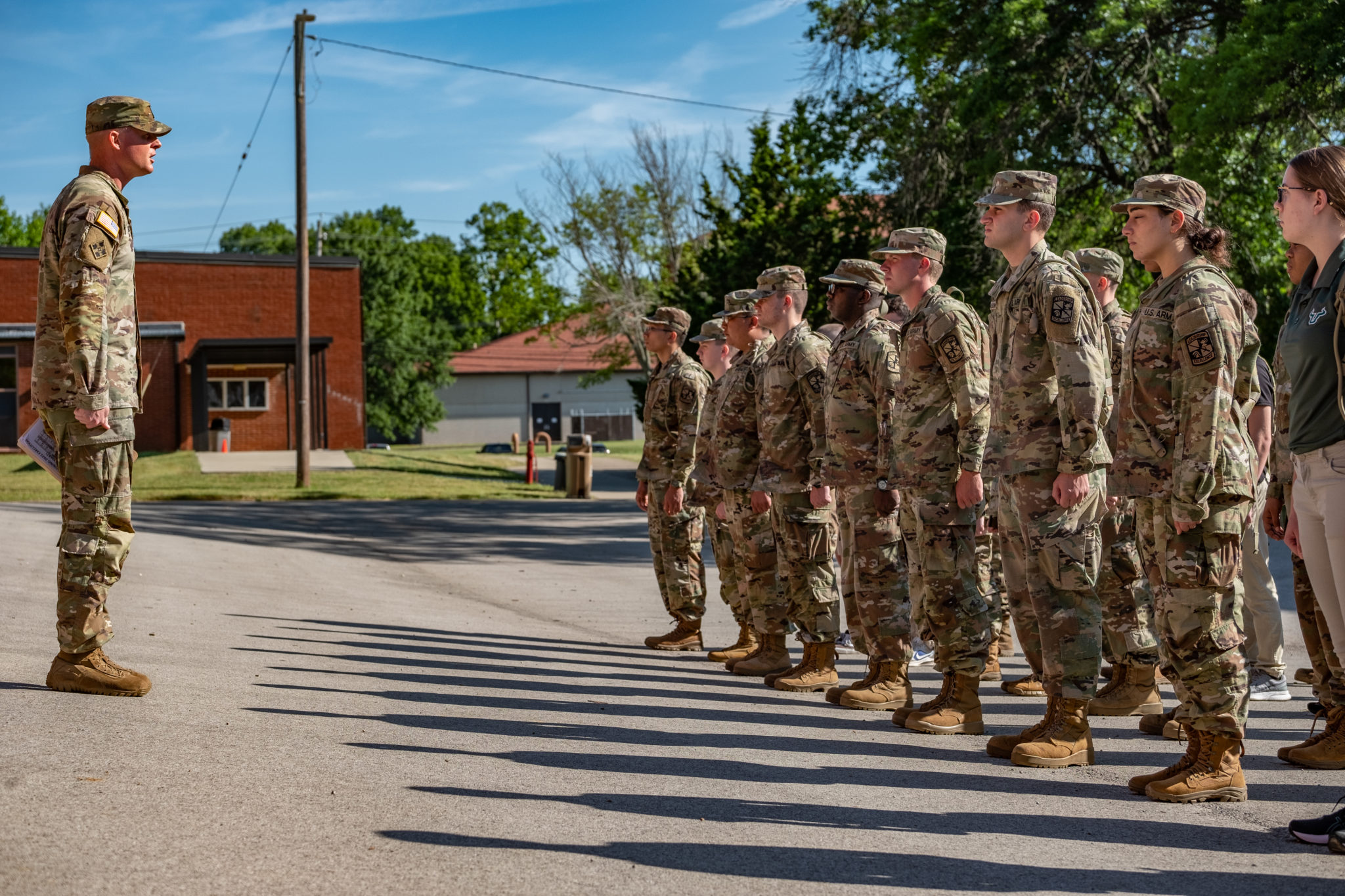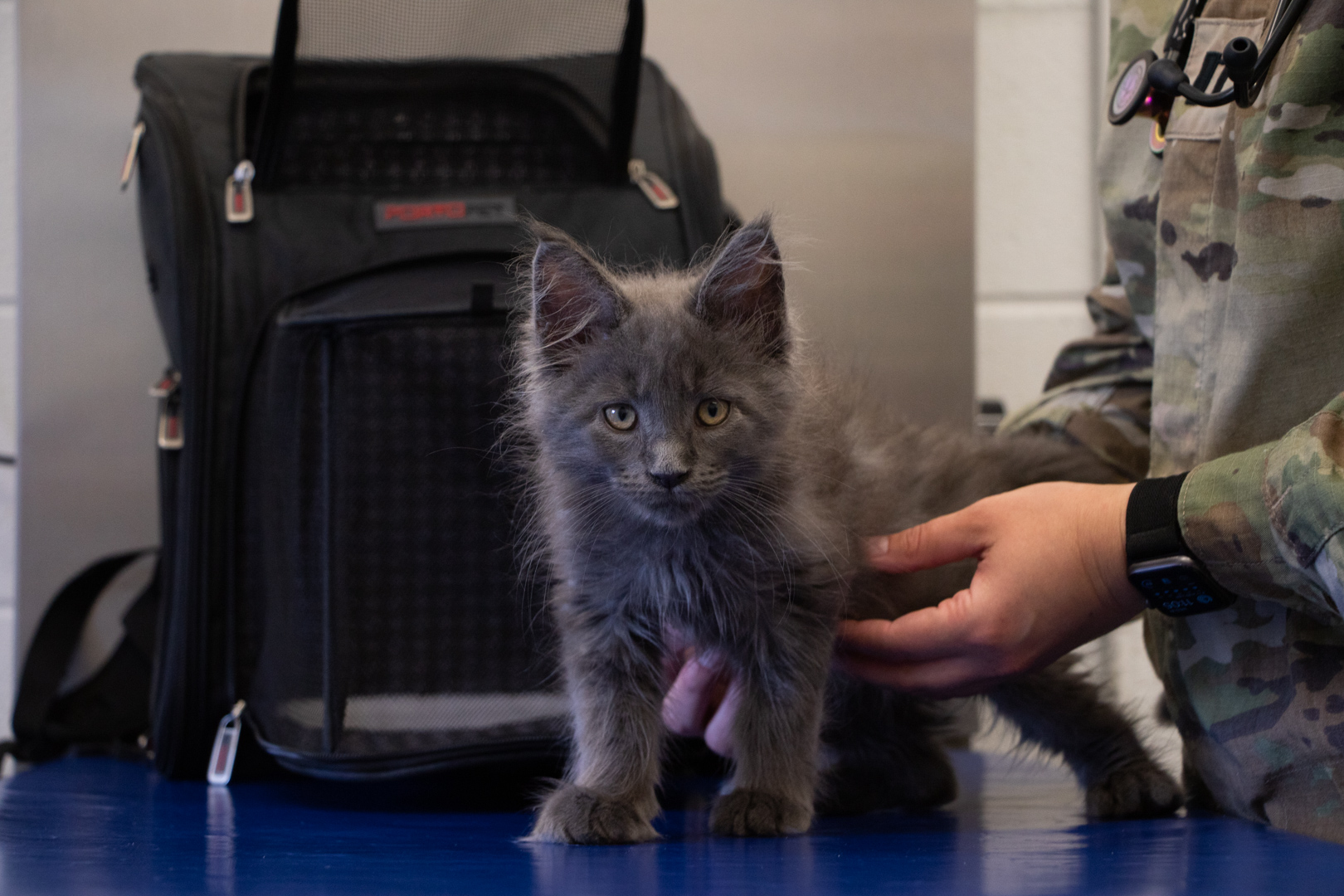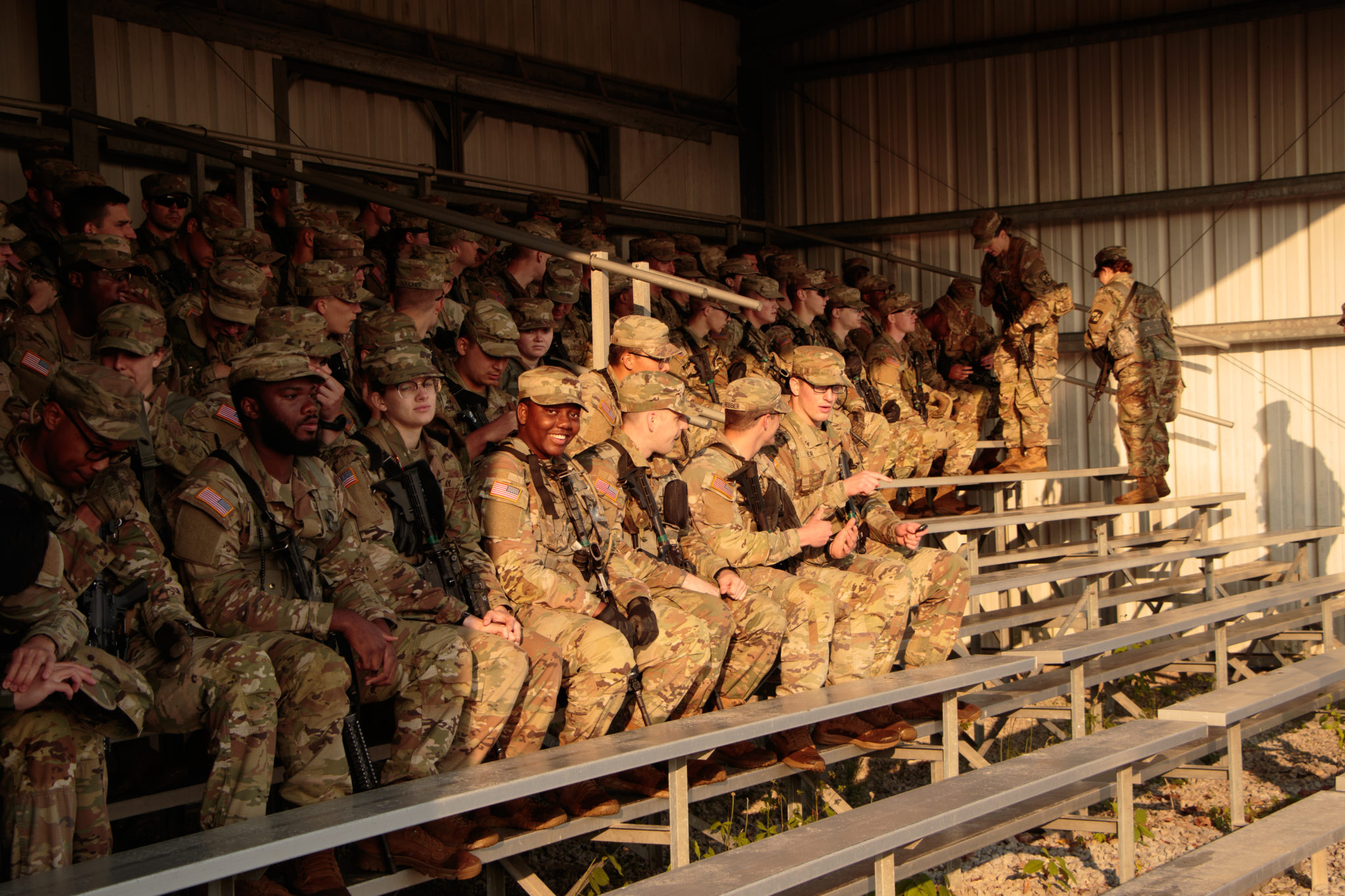As Cadet Summer Training (CST) 2022 comes to a close and 10,000 freshly graduated Army Reserve Officer Training Corps (ROTC) Cadets depart Fort Knox, Ky., it is time to take a look back at some of the successes from Advanced and Basic Camp.
From the moment Cadets got boots on the ground they were prepared and willing to put in the work.
“I was very impressed with how Cadets showed up here physically ready to operate,” said Col. Douglas Thompson, Commandant, U.S. Army Cadet Summer Training, something he credited to each Cadet’s individual ROTC program at the over 900 universities they traveled from.
Advanced Camp:
One way the Cadets were able to showcase their physical preparedness was the addition of the Army Combat Fitness Test (ACFT). According to Chaplain Capt. Rob Haight, this was the first year Cadets had to attempt the updated ACFT test.
“They’re very motivated and very excited,” said Haight.
The six events; deadlift, standing power throw, hand release push-up, plank, sprint-drag-carry, and a two-mile run, were expected of the Cadets completing the test.
The first year including the updated ACFT at CST proved to be very impressive with a 93.3% pass rate. Out of 251 male Cadets who passed, 23 scored a 600, and out of 184 females who passed, 30 scored between 590-599.
“I think to train like this, to grow, and to learn is the best way we can honor those who have given for our country,” said Haight.
Another physically demanding event that Cadets were required to complete was the 6-mile-foot-march. Though Cadets stepped off together this was an individual march, where Cadets had two hours to complete their march with a 35 pound ruck strapped to their back.
“Everyone was so motivated the whole way, we kept cheering each other on each mile and it felt amazing,” said Cadet Hannah Kelly from Illinois State University.
Overall the event had a 99.98% pass rate and several Cadets stated that they felt a sense of accomplishment at the end.
Aside from being physically fit and being able to handle physically demanding training, each Cadet was required to pass three land navigation tests to graduate; the written test, which had a 99.8% pass rate, and both a day and night practical exercise, which had an overall 99.6% pass rate.
“Overall land navigation in and of itself is something that is very crucial to the Army and doing what we do,” said Cadet Kaden Earley, from the Indiana University of Pennsylvania.
To complete the day practical exercise, Cadets were given a map, a compass, and a protractor to find three of four given points, and for the night exercise they had to find at least one of two points.
“It’s kind of energizing because I found my first points in the first hour, hour and a half,” Earley said. “So, it was like ‘okay, cool, I can do this, I can keep going’ and my last one was a little difficult, but once I found that it was just a huge sigh of relief that I could get it.”
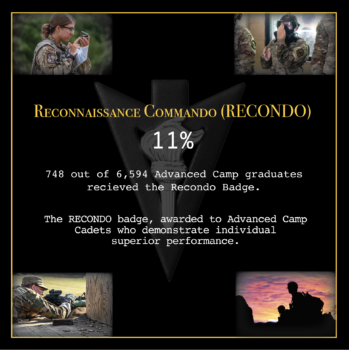
One event Cadets usually had mixed feelings about is the Chemical, Biological, Radiological, Nuclear (CBRN) training.
Cadets spent the day learning about the different types of chemical agents, how to identify them, and how to react to them. The instructor led training also included showing the Cadets the five levels of Mission Oriented Protective Posture (MOPP) gear and how to put on their protective masks.
To culminate the end of CBRN training, all Cadets had to don their masks and enter the confidence chamber, testing their ability to properly wear the protective mask, and build confidence in the equipment. The idea of entering the chamber and experiencing the gas often created an obstacle in Cadets’ minds.
“I was a little nervous at first, but everyone in my squad and platoon was in good spirits, so it went pretty easy,” said Cadet Hunter Cashmer from Clarion University, “It wasn’t as bad as I thought it would be.”
To maximize training time, each company split the Cadets between the CBRN and First Aid training sites.
Over on the First Aid side, the Cadets were tested on their triage ability to care for a wounded battle buddy under fire. To be successful, Cadets were required to apply a tourniquet, stop a sucking chest wound, apply proper bandaging to an active bleed, and check for breaks and burns using the push-pull method.
“I completed my test for first aid, it went by super well, and the Cadre’s help and instructions prior really helped me gain that confidence,” said Cadet Nancy-Shannon Cruz from the University of West Florida.
Both CBRN and first aid training had a 100% pass rate.
“Cadre were really helpful in emphasizing how they’re here to help us learn,” Cruz said. “No one’s here to fail and they’re not going to let us fail. They’re going to give us all the resources we need in order to pass and succeed after camp.”
During CST, Cadets were also taught a sense of basic rifle marksmanship at the Engagement Skills Trainer (EST) before having to group and zero their weapons, which prepared them for the rifle qualification test.
“If you listen to the instructors and take their advice to heart you’ll do okay,” said Cadet Jake Gleason from the University of Alabama, Huntsville, “I kind of learned where I was as a shooter. I’m pretty good, but I think I could do better, especially with what I learned today,” he stated after qualifying as a sharp-shooter.
To qualify with their M-4 Carbines, Cadets had to hit a minimum of 23 out of 40 targets which, with a 99.98% pass rate, most Cadets managed to do.
Finally as Cadets neared the end of camp, they headed to the field for Field Training Exercises (FTX). During this training Cadets were lead through a crawl-walk-run model allowing them to learn, practice and then lead simulated missions on their own.
During walk phase, the Cadets were provided with Cadre guidance as they completed their field missions getting less guidance as the phases went on.
“I think it’s a really great development of each individual person, as well as the organization of the Army itself. To be able to be here, out in the field for 12 days, and really learn to cooperate with each other,” said Cadet William Pettit from Georgia Military College.
The 35 day training was also filled with three trips down the rappel tower, the confidence course, grenade training, squad training exercise (STX), a battle march and shoot (BMS), and a 12-mile march that marked the end of their time in the field.
“Camp has been awesome. We are learning different things every single day. It’s amazing to close it out like this, and we’re just ready to go,” said Cadet Oluwasegun Olatunji from Sam Houston State University.
By the end of CST the 6,594 Cadets, across 11 Regiments, will have graduated Advanced Camp taking with them the knowledge and applied leadership skills they need to be future Army officers such as; building team cohesion and becoming adaptive leaders.
Basic Camp:
After arriving at Fort Knox, 935 Basic Camp Cadets, those not yet contracted to the Army, spent 32 days learning the basics of Army ROTC and preparing for their potential Army careers.
During camp, Cadets learned to work together at various events, such as the high ropes course, land navigation, squad training exercises (STX), FTX, the obstacle course and the night infiltration course (NIC) under the guidance of their Drill Sgt.
One common task across camp was keeping morale high. After completing the obstacle course Cadet Trevor Corso from George Mason University said that it is important to keep morale high and to make that the standard.
Aside from morale building, camp provided some Cadets with a bonding experience through conquering fears, such as heights on the high ropes course.
“Seeing her cheering me on was making me forget how high I was, and also her encouraging me to do it was like easing me off from being nervous, just making it fun for me,” said Cadet Michelle Mercado, from the University of South California, about her battle buddy during the course.
The Forest Hills Climbing Complex at Fort Knox, houses the high ropes course, 45 foot alpine climbing tower, and the 55 foot rock climbing wall that the Cadets completed. The mixture of heights and the battle buddy system provided Cadets another bonding experience.
“She’s like a sister I never had now and we’ve only been together for about three weeks. So now we’re gonna make more memories,” said Chelsea Garcia about her battle buddy, Mercado, during the high ropes course.
One event that Cadets commonly enjoyed was the Night Infiltration Course, where Cadets were tasked with either high or low crawling through a simulated combat scenario.
“Oh my gosh, my blood is pumping. I’m ecstatic. Over there, I was yelling ‘Can we do it again?’ I want to do it again. It was so much fun,” said Cadet Nicole Darland from the University of Kentucky.
Even though they were crawling across sand and rock under M40 machine gun rounds and through explosive simulators, Cadets often finished the task with a smile on their face.
“A lot of these cadets are coming out of it, and it’s just a smile, ear to ear,” said Lt. Col. Travis Easterling, Professor of Military Science at Jacksonville State University, “It’s a unique thing that you only get at this course and so I’m ecstatic that they did it this year.”
As Basic Camp Cadets head back to their ROTC programs they will have accumulated the skills and knowledge to execute tactical missions at a squad level, encourage team development, and demonstrate the Army values.

Blood Drive:
Cadets from both Advanced and Basic Camps were able to participate in a blood drive with Armed Services Blood Program during the final days of their time at CST.
“As every year, the cadet response this year has been phenomenal,” said Navy Capt. Leslie Riggs, the Division Chief for the Armed Services Blood Program. “I attribute that to the individuals that are wanting to donate as well as the leadership here, you know, encouraging them to donate and again allowing us to come in and hold a blood drive during their training schedules.”
Cadets donated over 3,500 units of blood which made the drive another success for CST 2022.
Additional Programs:
Outside of Advanced and Basic Camp, CST provides other training programs for Cadets to build their abilities as leaders. Making up the other roughly 3,000 Cadets of CST were the those involved in these additional programs; Cadet Advanced Individual Training (CAIT), Cadet Troop Leader Training (CTLT), the Nurse Summer Training Program (NSTP) and the internship programs.
As members of CAIT, Cadets were sent to various skill enhancement schools for specialized training such as; Airborne, Air Assault and Mountain Warfare training.
Cadets who participated in the CTLT program were provided with the opportunity to enhance their leadership skills in an active duty or reserve training environments such as; the United States Army Forces Command (FORSCOM), the Army Training and Doctrine Command (TRADOC), or areas within the continental U.S.
For those Cadets studying nursing the NSTP provided the opportunity to gain hands on experience as an Army nurse. CST was able to do this by sending more than 180 Cadets to 20 different military hospitals for clinical training.
The CST internship program also provided an opportunity for Cadets to train in specialized fields by working with the Department of Defense and other government agencies. Internships last approximately 28 days providing Cadet interns the chance to gain real world leadership experience.
As Commanding officer Col. Douglas Thompson and Command Sgt. Maj. Shannon L. Adkins look back at CST 2022 they have already begun preparing for #CST2023.
As for the upcoming juniors who will attend CST this coming year, Col. Thompson said, “Be ready, believe it or not, this is going to set the tone for the rest of your military career…so you got to come here and be ready to go”.

